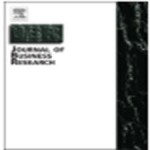Strategies for the management and adoption of impact capture processes within research information management systems
ABSTRACT
Following the 2014 UK Research Excellence Framework (REF), attention across the Higher Education sector is turning to embedding impact measurement within the organisation. Impact is defined as the social, financial and environmental effects of research. Planning and capturing impact however is a difficult and resource- intensive activity, demanding both strategic commitment and infrastructure support. A means to systematically capture and monitor impact across the organisation is crucial to continued research success. In addition, with impact data capture as an emerging practice, there is the opportunity and necessity for a degree of standardisation in the approach to measuring impact across HEIs. Vertigo Ventures, an impact measurement consultancy, has been using and expanding its tool- VV-Impact Metrics with UK universities to support assessments by identifying impact pathways, impact indicators, evidence collection and analysis to improve the quality of theevidence and narrative. Vertigo Ventures has been working with Coventry University to use its VV-Impact Metrics tool in their self-service module (ERIC) to create a systematised data capture platform that can be readily used by the academic community to input data. This paper discusses the experience and learning from the process of embedding a solution institutionally.
INTRODUCTION
The UK Higher Education (HE) sector is under increasing scrutiny to demonstrate the impact of its research on the wider social world. Recent austerity measures, increased tuition fees and a growing climate of public accountability obligate universities to transparently demonstrate spending, research excellence and ultimately a return on public investment. Universities expend sizeable resources reporting a myriad of institutional activities such as student numbers and PhD completions, and submit a vast body of monitoring data to agencies such as the Higher Education Funding Council for England (HEFCE) and the Higher Education Statistics Agency (HESA). As such the HE sector is highly experienced in large scale information management and reporting, a skill it increasingly needs to translate into impact management. A key driver for UK research activity and performance monitoring is the ongoing series of Research Assessment Exercises (RAEs), succeeded by the recent Research Excellence Framework (REF) in 2014. Within these assessments, expert panels review research quality via the excellence of academic outputs and benchmark these against collaboratively agreed standards (up to a 4 star or ‘world leading’ rating).
چکیده
پس از چهارچوب تعالي سازمان پژوهشي انگلستان 2014 (REF) توجه در بخش آموزش عالي در حال تبديل شدن به تعيين اندازه گيري اثرات درون سازمان است. تاثیر آن به عنوان اثرات اجتماعی، مالی و محیطی تحقیق تعریف شده است. با این حال، برنامه ریزی و گرفتن تاثیر، یک فعالیت دشوار و پرقدرت است که خواهان تعهد استراتژیک و پشتیبانی زیرساخت است. بدین معناست که پیگیری و نظارت بر تاثیر سازمان در سازمان، برای پیگیری موفقیت آمیز تحقیقات حیاتی است. علاوه بر این، با گرفتن داده های ضربه به عنوان یک عمل در حال ظهور، فرصت و ضرورت برای یک نوع استاندارد سازی در رویکرد برای اندازه گیری تاثیر در HEI ها وجود دارد. Vertigo Ventures، مشاوره اندازه گیری تاثیر، با استفاده از شاخص های تأثیر VV-VV-Impact Metrics از دانشگاه های انگلیس برای ارزیابی ها با شناسایی مسیرهای تاثیر گذاری، شاخص های تاثیر گذاری، جمع آوری شواهد و تجزیه و تحلیل برای بهبود کیفیت اثبات و روایت استفاده کرده است. Vertigo Ventures در حال کار با دانشگاه کowentry برای استفاده از ابزار سنجش تاثیر VV-Impact Metrics در ماژول خودکفا (ERIC) برای ایجاد یک پلت فرم ضبط اطلاعات سیستم شده است که می تواند به آسانی توسط جامعه دانشگاهی برای ورود اطلاعات مورد استفاده قرار گیرد. این مقاله تجربیات و یادگیری را از فرایند تعبیه یک راه حل نهادی بررسی می کند.
مقدمه
بخش آموزش عالی انگلستان در حال بررسی است که اثرات تحقیقاتش را در مورد دنیای اجتماعی گسترده تر نشان می دهد. اقدامات ریاضت اقتصادی اخیر، افزایش هزینه های تحصیل و ایجاد شرایط رو به رشد مسئولیت پذیری عمومی، دانشگاه ها را مجبور می کند تا هزینه های شفاف، میزان پیشرفت تحقیقات و در نهایت بازده سرمایه گذاری عمومی را نشان دهند. دانشگاه ها منابع قابل توجهی را گزارش می دهند که تعداد زیادی از فعالیت های نهادی مانند تعداد دانشجویان و تکمیل دکترا را ارائه می دهند و اطلاعات گسترده ای از داده های نظارت را به آژانس هایی مانند شورای کمک هزینه تحصیلی انگلستان (HEFCE) و اداره آمار عالی آموزش عالی (HESA) ارائه می دهند. به همین ترتیب، بخش HE بسیار با تجربه در مدیریت اطلاعات و گزارش دهی در مقیاس وسیع تجربه می کند؛ مهارت آن به طور فزاینده ای نیاز به ترجمه در مدیریت تاثیر دارد. یک راننده کلیدی برای فعالیت تحقیقاتی بریتانیا و نظارت بر عملکرد، مجموعه ای مداوم از تمرینات ارزیابی تحقیقاتی (RAEs) است که در سال 2014 توسط چهارچوب پیشرفته تحقیقات تحقیقاتی (REF) پیروی می شود. در این ارزیابی ها، هیئت های تخصصی، بررسی کیفیت تحقیق را از طریق تعالی خروجی های علمی بررسی می کنند و این معیارها را در برابر مقررات توافق شده مشترک (تا رتبه 4 یا “رتبه جهانی”) مقایسه کنید.
Year: 2014
Publisher : ELSEVIER
By : Laura Fedorciow , Julie Bayley
File Information: English Language/ 8 Page / size: 278 KB
Only site members can download free of charge after registering and adding to the cart
سال : 1393
ناشر : ELSEVIER
کاری از : لورا فوردوسو، جولی بیلی
اطلاعات فایل : زبان انگلیسی / 8صفحه / حجم : KB 278

![Strategies for the management and adoption of impact capture[taliem.ir]](https://taliem.ir/wp-content/uploads/Strategies-for-the-management-and-adoption-of-impact-capturetaliem.ir_-1.jpg)
![IMPACT OF CROP AND WEED DENSITIES ON COMPETITION[taliem.ir] IMPACT OF CROP AND WEED DENSITIES ON COMPETITION[taliem.ir]](https://taliem.ir/wp-content/uploads/IMPACT-OF-CROP-AND-WEED-DENSITIES-ON-COMPETITIONtaliem.ir_.jpg)

![Improved ant colony algorithm for adaptive[taliem.ir]](https://taliem.ir/wp-content/uploads/Improved-ant-colony-algorithm-for-adaptivetaliem.ir_-1-150x150.jpg)

دیدگاه خود را ثبت کنید
تمایل دارید در گفتگو شرکت کنید؟نظری بدهید!